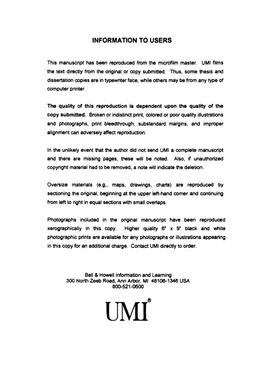| dc.contributor.advisor | Schnell, Gary D., | en_US |
| dc.contributor.author | Certain, David Lee. | en_US |
| dc.date.accessioned | 2013-08-16T12:31:09Z | |
| dc.date.available | 2013-08-16T12:31:09Z | |
| dc.date.issued | 2000 | en_US |
| dc.identifier.uri | https://hdl.handle.net/11244/6031 | |
| dc.description.abstract | I used BBS data and habitat maps to examine associations of landscape structure and composition with the relative mean abundance of the scissor-tailed flycatcher. Routes were scattered over most of the breeding range. Landscape variables were significantly associated with abundance. Relative abundance and landscape variables exhibited spatial autocorrelation. However, differences in landscape variables remained significantly associated with differences in abundance after allowing for spatial structure. | en_US |
| dc.description.abstract | Results showed that scissor-tailed flycatchers used structural and compositional characteristics at multiple scales to select nest sites on Fort Sill. Many of the characteristics selected would tend to conceal and isolate nests from potential nest predators. Successful nest sites had less woody edge and tended to be further away from the nearest woody edge than depredated nests. | en_US |
| dc.description.abstract | These findings show that structural and compositional characteristics of habitat at multiple scales surrounding nest sites can have a significant influence on habitat choice and fitness in birds. These data also support previous findings that edge habitats have negative effects on reproductive success of breeding birds and indicate that birds nesting in prairie habitats face some of the same selective pressures as those nesting in fragmented forest landscapes. Finally, results suggest that landscape structure influences local avian abundance and range-wide abundance patterns, most likely via its influence on local reproductive success. | en_US |
| dc.description.abstract | Large-scale declines in the abundance of many bird species in North America has led to an increased research on the nesting habits of these species. Nest-site choice by birds can significantly affect the probability of successful reproduction and can occur at scales ranging from the area immediately surrounding the nest to that of the multi-patch landscape across which a population is distributed. In addition, characteristics of landscape structure (e.g. fragmentation) may influence local abundance, resulting in geographic-scale avian abundance patterns. I measured structural and compositional characteristics of habitats on the Fort Sill Military Reservation in southwest Oklahoma and along Breeding Bird Survey (BBS) routes across the geographic range of the scissor-tailed flycatcher (Tyrannus forficatus) to examine associations between nest-site choice, nest success, and the distribution patterns of local abundance. | en_US |
| dc.format.extent | xi, 89 leaves : | en_US |
| dc.subject | Birds Habitat Oklahoma. | en_US |
| dc.subject | Birds. | en_US |
| dc.subject | Biology, Ecology. | en_US |
| dc.subject | Birds Nests Oklahoma. | en_US |
| dc.title | A multiscale analysis of nest-site choice, nest success, and population abundance in the scissor-tailed flycatcher (Tyrannus forficatus). | en_US |
| dc.type | Thesis | en_US |
| dc.thesis.degree | Ph.D. | en_US |
| dc.thesis.degreeDiscipline | Department of Biology | en_US |
| dc.note | Major Professor: Gary D. Schnell. | en_US |
| dc.note | Source: Dissertation Abstracts International, Volume: 61-09, Section: B, page: 4524. | en_US |
| ou.identifier | (UMI)AAI9988307 | en_US |
| ou.group | College of Arts and Sciences::Department of Biology | |
